Watching a litter of tiny kittens suckling voraciously, you may be wondering how they will ever switch over to eating on their own?
The transition from nursing to independent eating is called weaning. It is a process and does not happen over night, but the good news is yes, every kitten eventually weans off its mother's milk and moves on to eating cat food!
Is there any way for you to help with the process of weaning? Absolutely! If you are taking care of a lactating cat, it is up to you to offer the kittens the right alternatives, at the right time.
Don't worry, we're here to guide you through the basic steps needed to help the kittens transition to cat food in a healthy and stable way.
As with all things related to cat care, this is a process which needs to be done gradually and with a lot of patience.
When should the kittens be weaned?
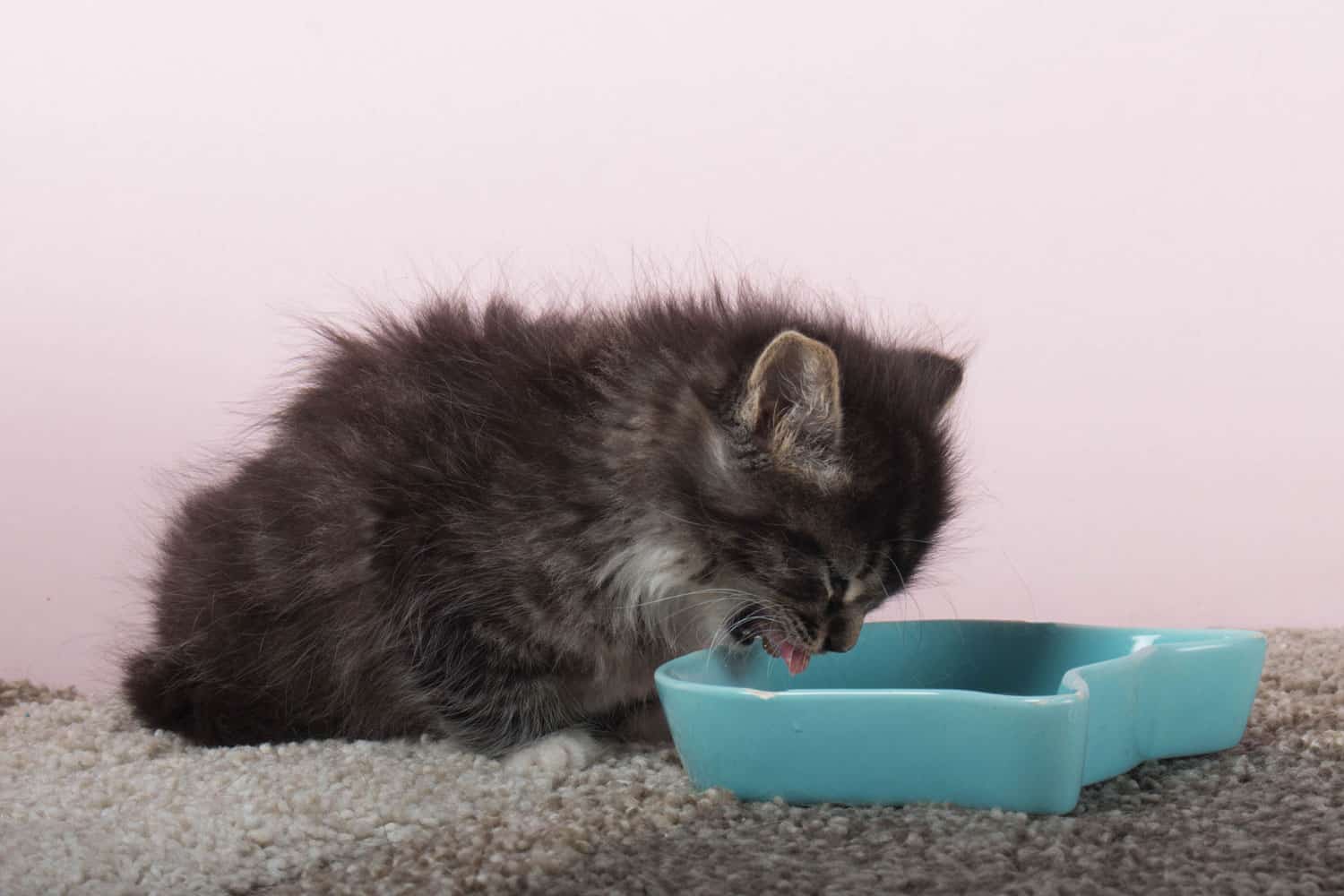
Kittens usually begin to try different kinds of food between the ages of 3 to 5 weeks. It's a time window and not an exact date, and different kittens - even if they are littermates - can start at different times.
You should let nature take its course and allow the mother cat and the kittens to determine the pace of weaning.
There will be a period of several weeks during which the kittens are likely to mix feeding on their own with nursing.
That is perfectly ok, and you should not try to stop them from nursing. The mother cat can sense when it's time to push the kittens away, and you can leave that part to her.
SIGN UP FOR THECATSITE'S EMAIL UPDATES >
How to introduce food to the kittens?
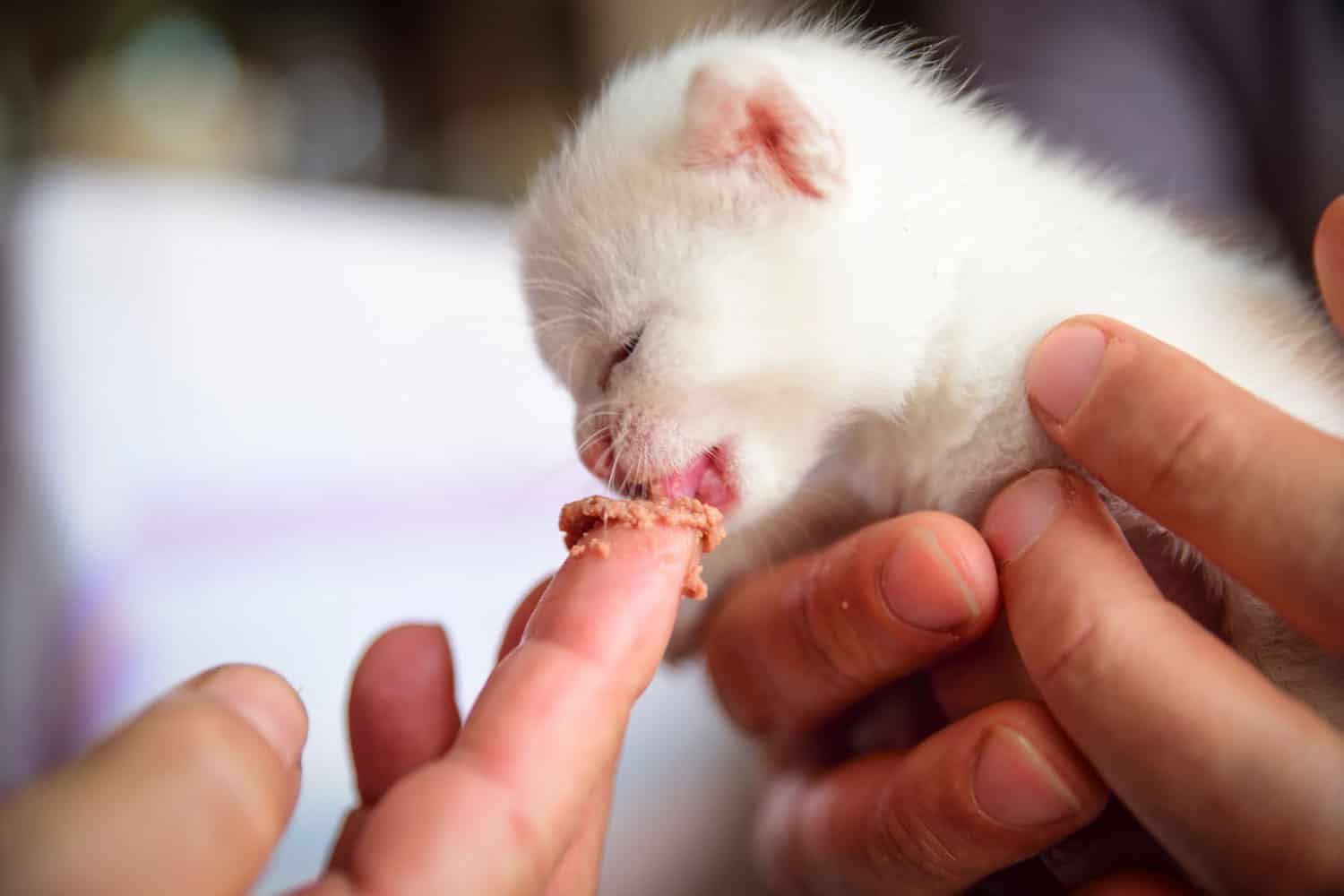
When the kittens are 3-4 weeks old - as they start moving around on their own - you can start offering them a different food source.
At first, offer only kitten milk replacer (KMR). It is the closest thing to their mother's milk and is least likely to cause any stomach issues.
First Tastes: Introducing KMR
Offer a small amount of milk replacer in a shallow feeding dish. A small saucer works well. Allow the kittens to explore the dish and its contents, but don't press them into tasting.
They need to do that out of their own interest. Be prepared to wipe them at the end of each session, as they are likely to splash the liquid around at first.
When the kittens finally learn how to lap up KMR, start mixing in small amounts of wet kitten food to make an appetizing gruel.
Start with only a little kitten food, and gradually increase the consistency of the mixture. Serve the gruel at room temperature or slightly warmer (but not hot!).
Choosing the Right Food
Use quality canned kitten food and not regular cat food. Food that is formulated for kittens contains more protein than regular adult formulas.
Don't leave any wet food out for more than 20 minutes (even less on hot days). Throw away any leftovers and run the dishes in the dishwasher between feedings.
Don't worry about the mother cat sharing the meal. She can use the extra protein and the nutrients in the KMR and kitten food and it's actually good for her. It's also good for the kittens to watch her feeding.
By the time the kittens are six weeks old you should have finished transitioning from KMR to kitten food. They should have no problem feeding on canned kitten food without KMR at this point.
Don't worry if they keep nursing from the mother cat as well. It's healthy for them, and if she doesn't mind, you shouldn't either. She will know how to wean them off nursing when the time comes.
Do not separate the kittens from the mother at any point during the weaning process.
The kittens should stay with the mother cat until they are 12-16 weeks old, long after they feed on their own. They learn important "cat skills" from their mother and should not be rushed into being separated from her and from each other.
What about hand reared kittens?
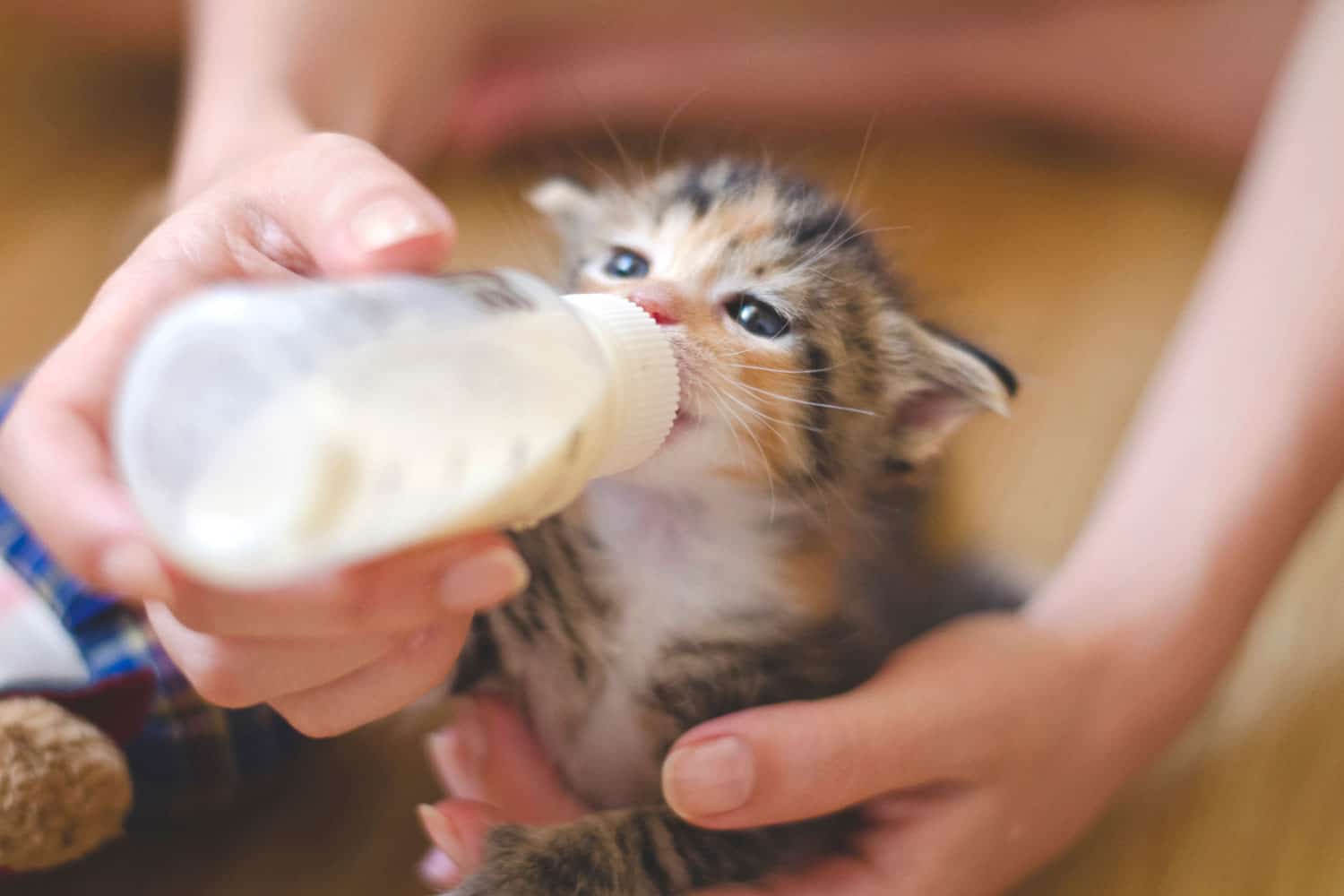
If you are caring for an orphaned kitten or one that has been rejected by its mother, you can start the same process at the age of three weeks.
Again, start gradually and keep offering bottle feedings until you're sure the kitten is lapping up diluted gruel.
Keep weighing the kittens to make sure they are gaining weight despite the change in feeding techniques.
Don't be afraid to keep supplementing with the bottle until you're sure every kitten is getting enough nutrition on his or her own.
(Picture of foster kittens transitioned into kitten food by TCS member and moderator @GoldyCat)
Read more: Weighing Newborn Kittens (and How This Could Save Their Lives)
What to do when kittens reject the food?
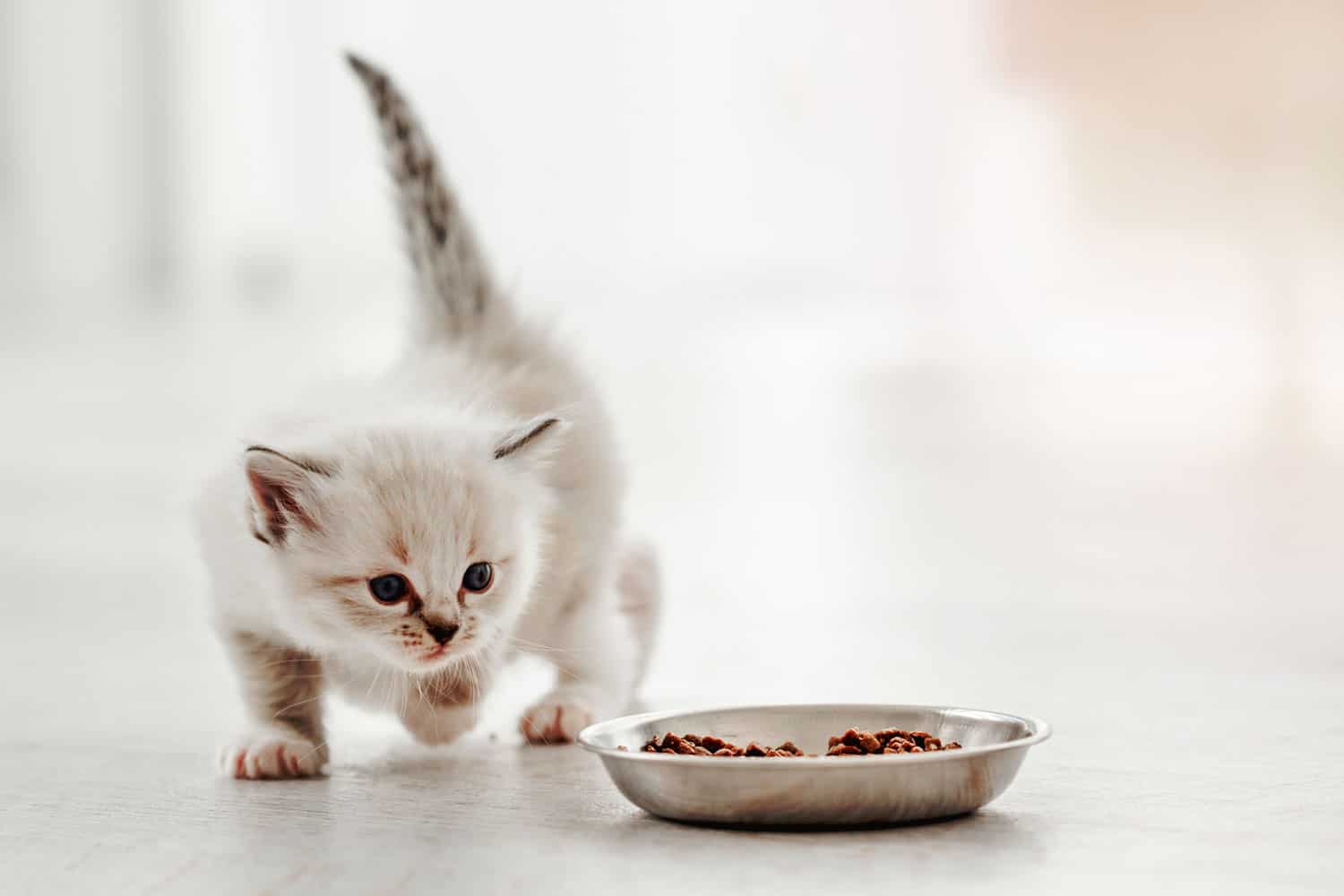
Make sure the feeding dish is shallow so the kittens can easily access its contents. It's perfectly normal for them to start by playing with their food!
Have a towel ready because they are likely to bat that saucer of KMR and possibly climb into it and wade in the liquid.
Give them some time to play like this. Eventually, they will lick some of the liquid off their paws and find out it's nice enough to lick and lap.
Some kittens may also scratch the floor around the dish and that's fine too. These are cat instincts kicking in and telling them to cover the smelly food that they're not eating.
Don't worry and have patience. Some kittens take longer to learn how to eat on their own.
If at any point any kitten shows loss of appetite and refuses to nurse or eat, you should get it to the vet as soon as possible.
Loss of appetite in kittens is a sign that something is wrong with them. Without immediate veterinary help they probably won't make it.
What to do if the kittens have diarrhea?
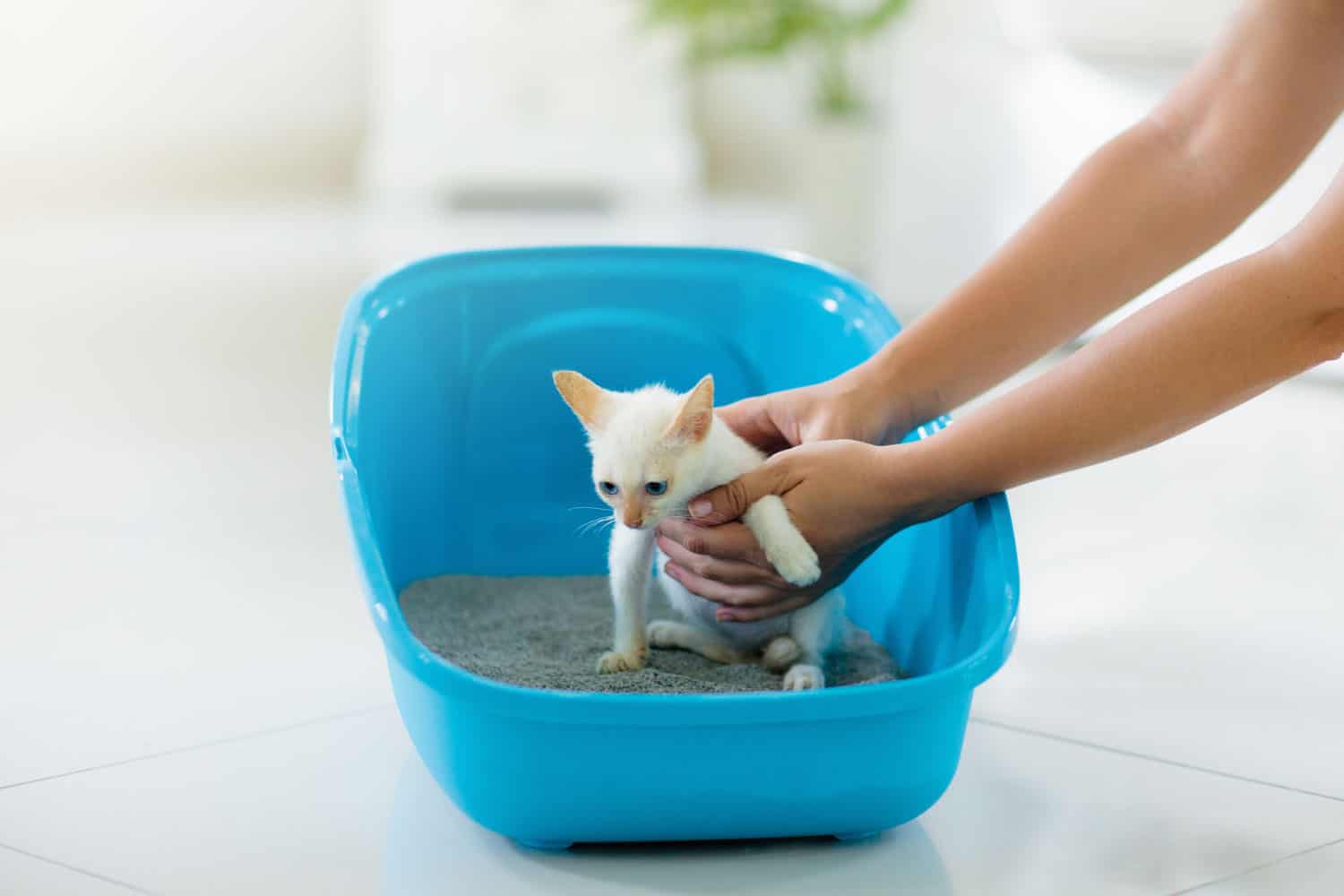
Kittens have sensitive digestive systems. That's why you have to transition from KMR to cat food very gradually and avoid any form of quick change in their food. A sudden change can cause diarrhea or softer stools.
The diarrhea can also be unrelated to the weaning process. If it continues for more than a day or if the kittens seem weak and lethargic, you need to get them to the vet as soon as you can.
They could be suffering from an infection and require immediate medical attention.
You should take extra care with kittens to prevent infections: Wash your hands before and after handling their food and litter and make sure they don't eat any food that's been left unrefrigerated for more than 20 minutes (less if it's a hot day).
Never feed raw meat to young kittens. Raw meat can have a high pathogen load. While a healthy adult cat can handle that load and fight off infections, it may be too much for fragile kittens.
If you feed the mother cat raw food, make sure the kittens don't have access to her feeding dishes. If you choose to feed raw down the line, transition them gradually and safely once they're older.
When to spay the mother cat
You should have the mother cat spayed as soon as the kittens can eat on their own.
It's ok to have her spayed while she's still lactating as long as the kittens are not nursing exclusively and can get nutrients from their gruel while she's away undergoing surgery.
She should be able to carry on nursing the kittens once she recovers from the anesthesia, and you should not separate her from the kittens.
So, how should you wean the kittens?
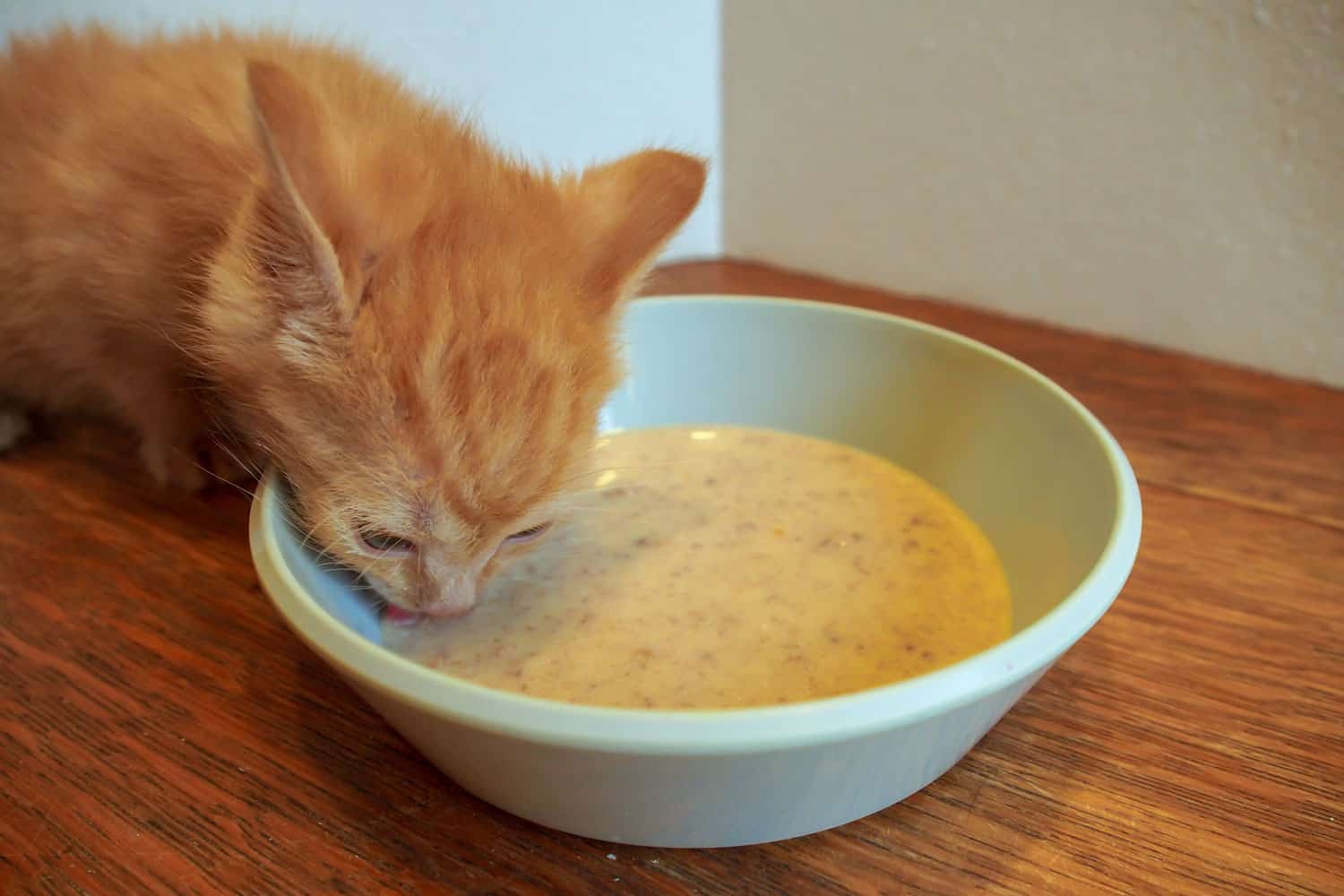
You should be there to offer them their first foods and do that the right way, without overwhelming their small bodies.
Keep the mother cat and kittens happy with clean nutritious food and make it available to the kittens in a gradual way. Don't forget to have the mother cat spayed on time!
If you're experiencing problems, we're here for you in the Pregnant Cat & Kitten Care forum! Join and post your questions and our members will try to help you.
SIGN UP FOR THECATSITE'S EMAIL UPDATES >
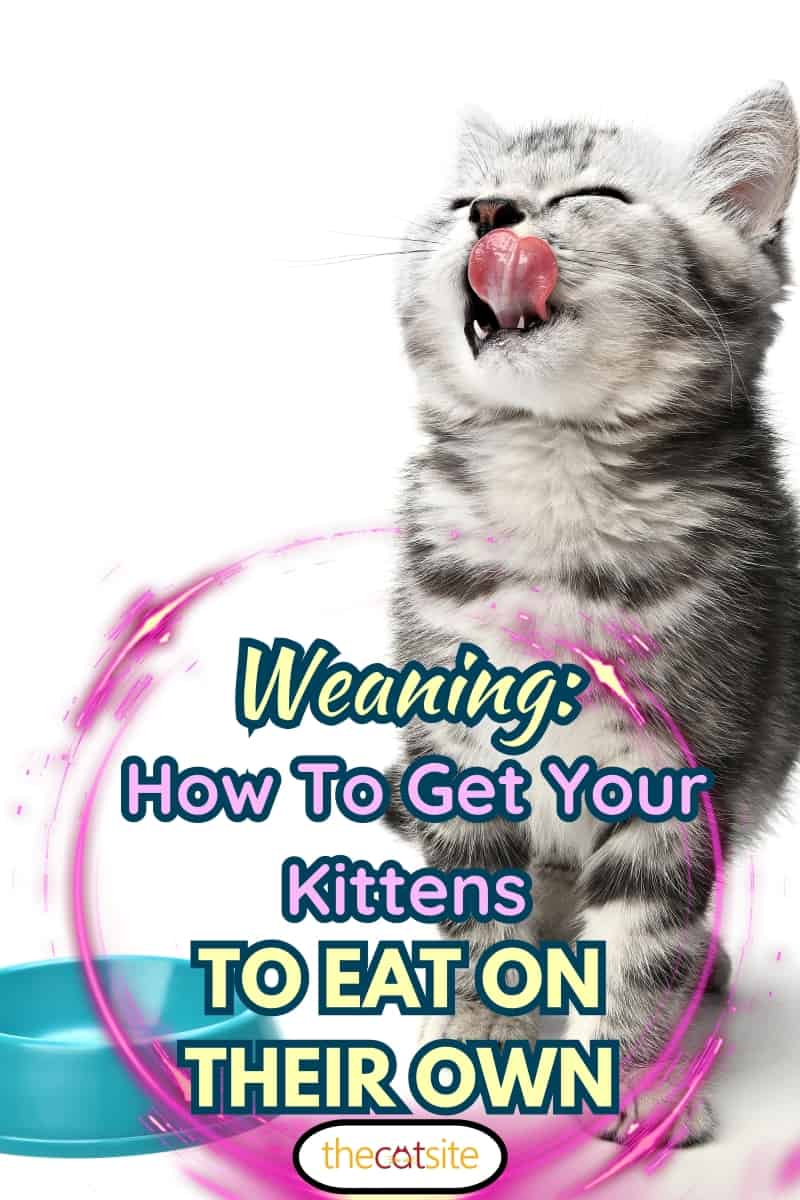
Note: We may get commissions for purchases made through links on this page.

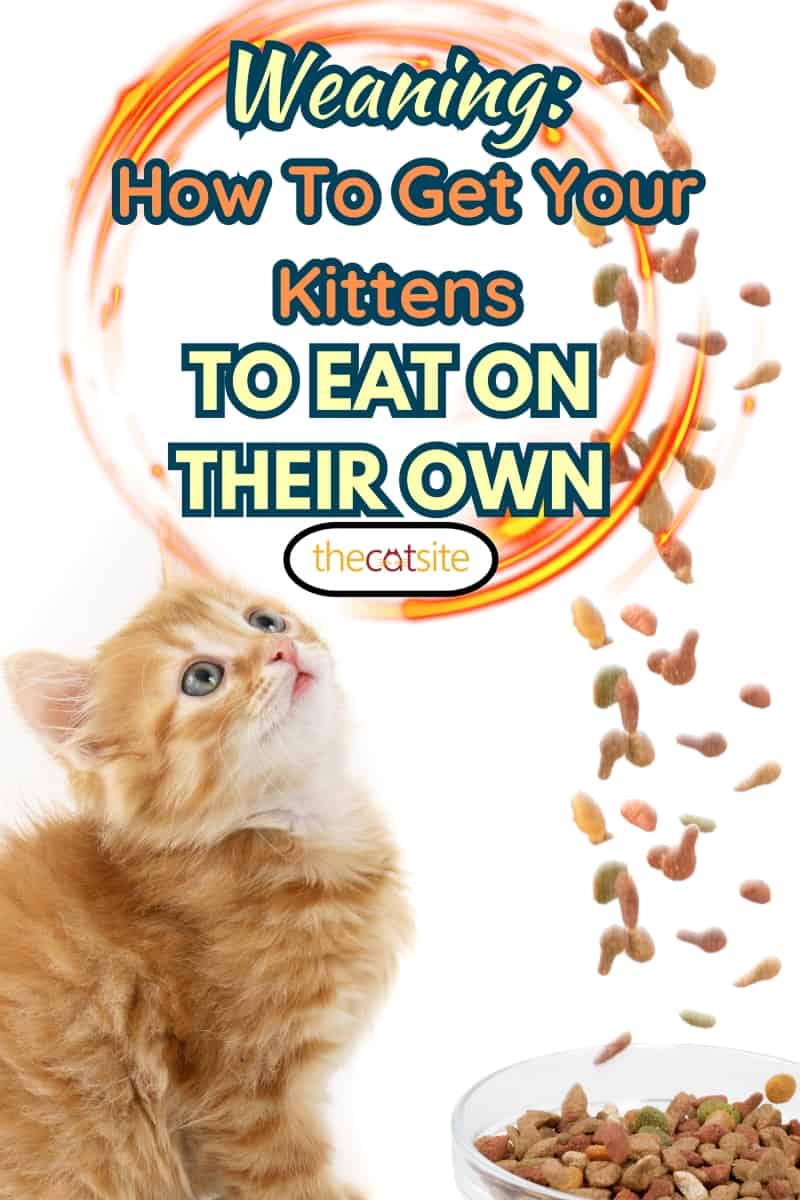
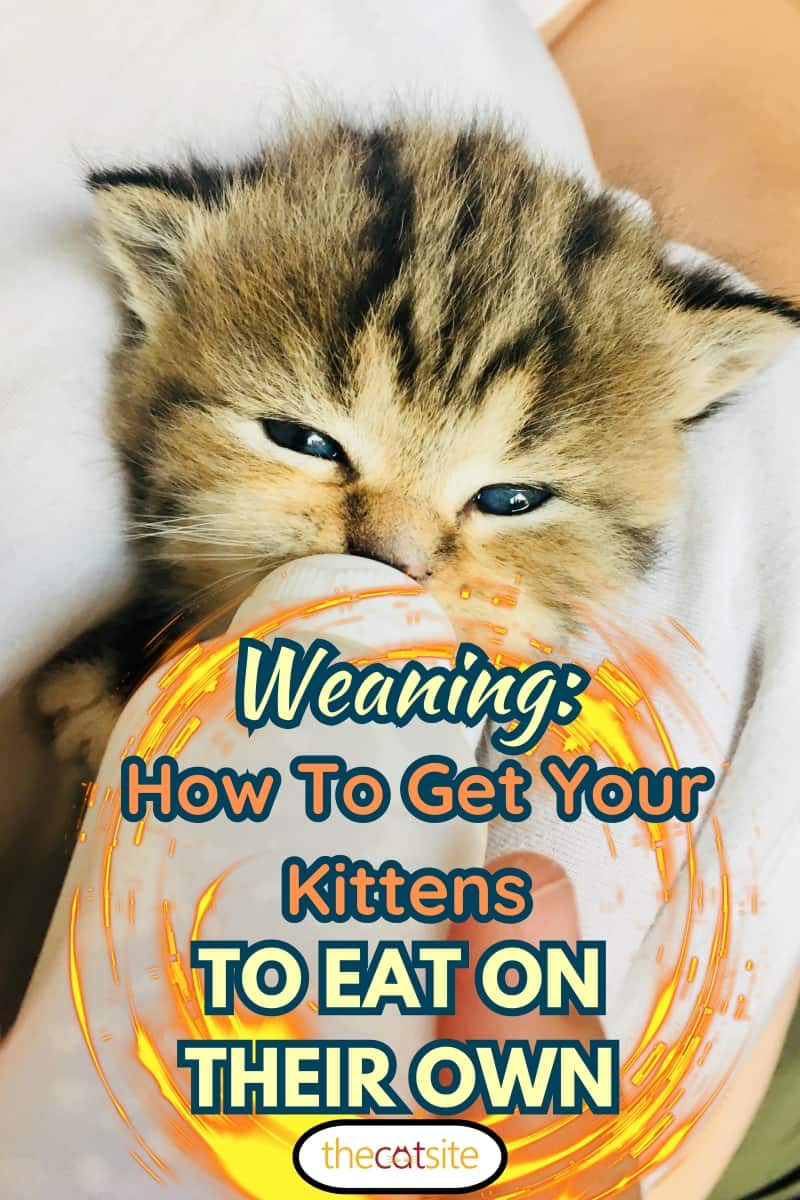
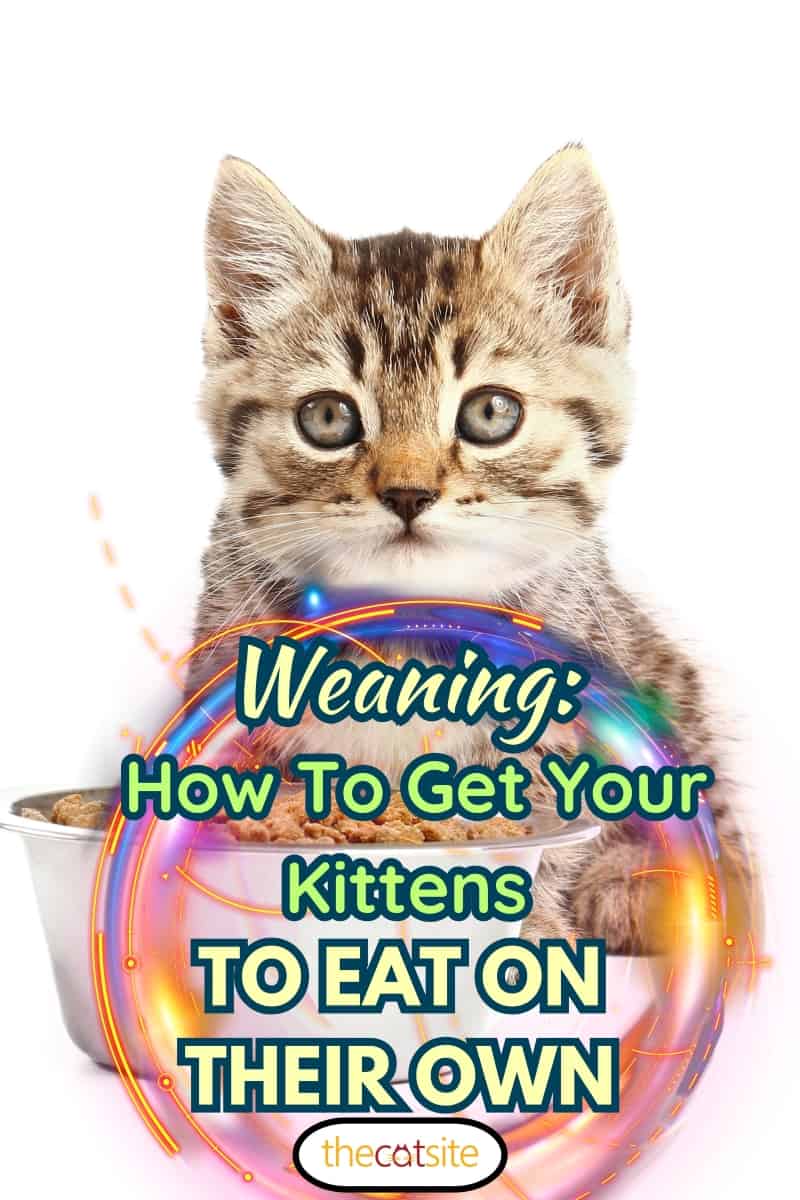
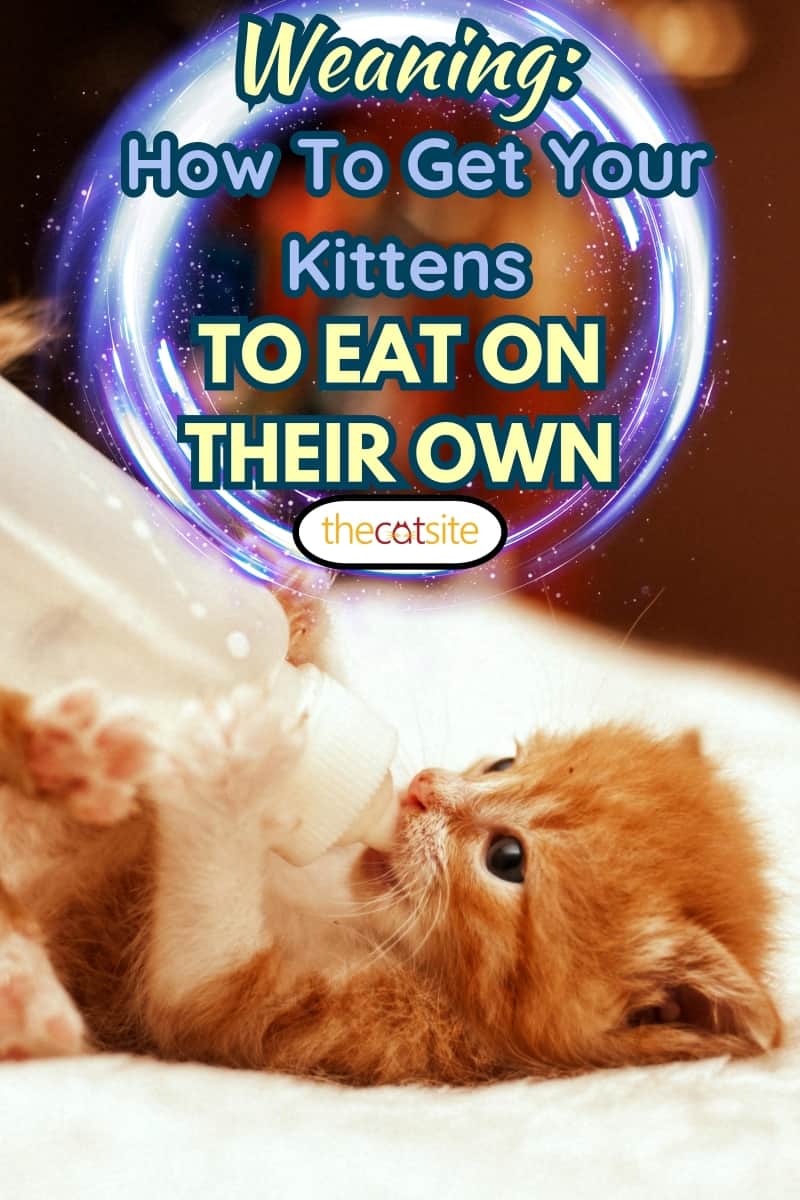
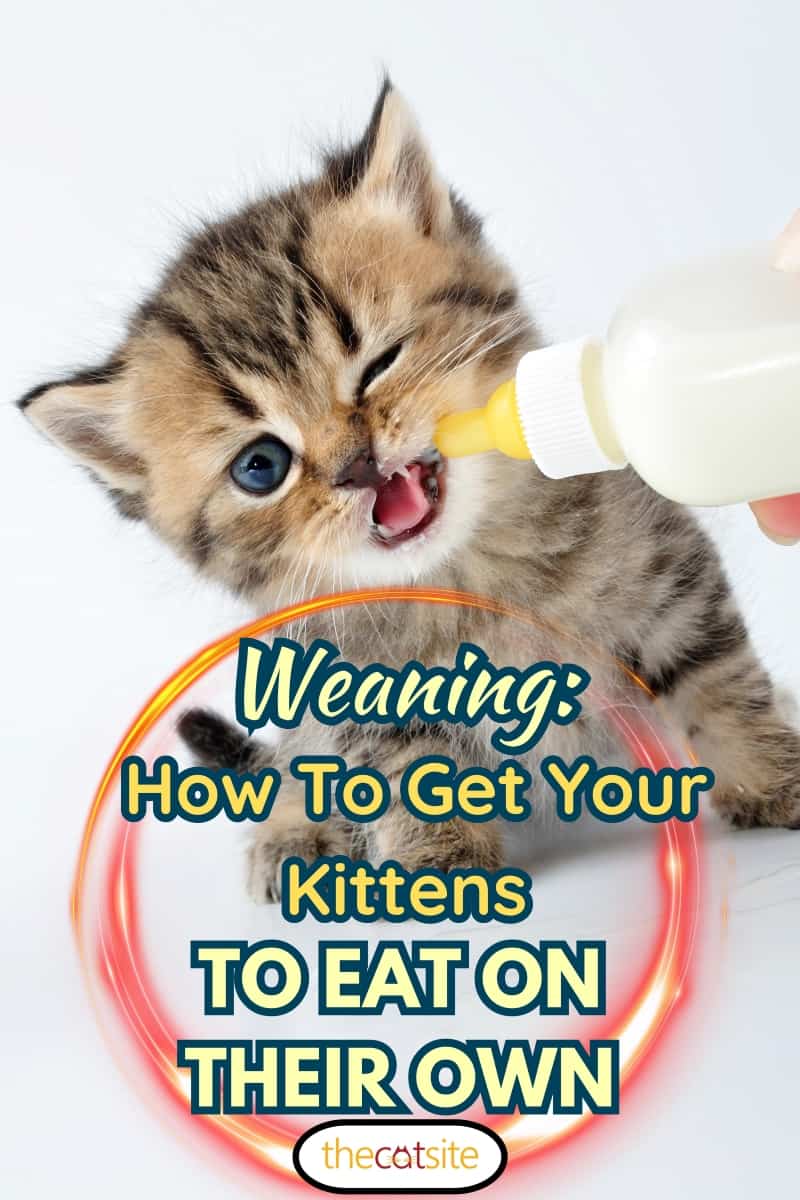

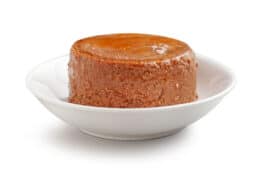

4 comments on “Weaning – How To Get Your Kittens To Eat On Their Own”